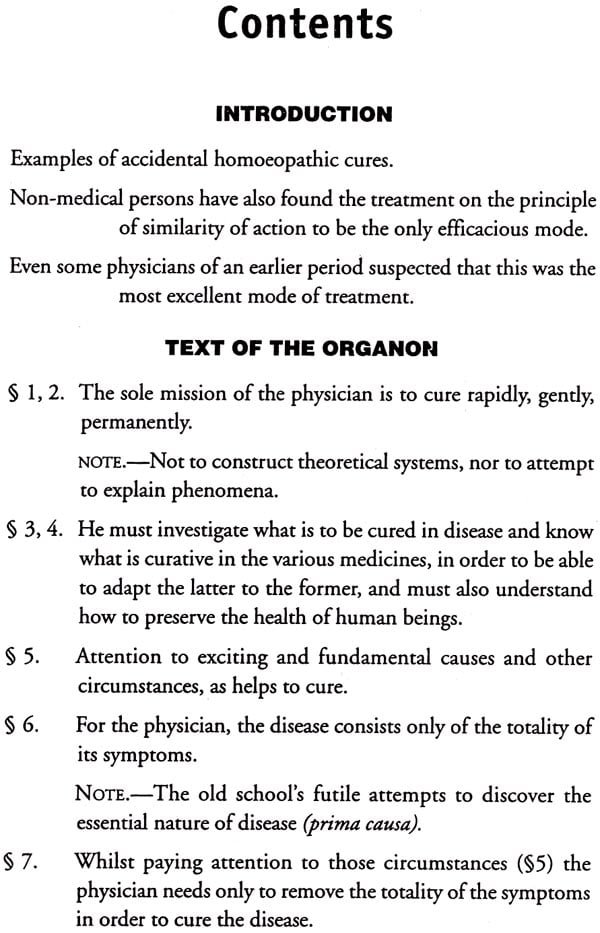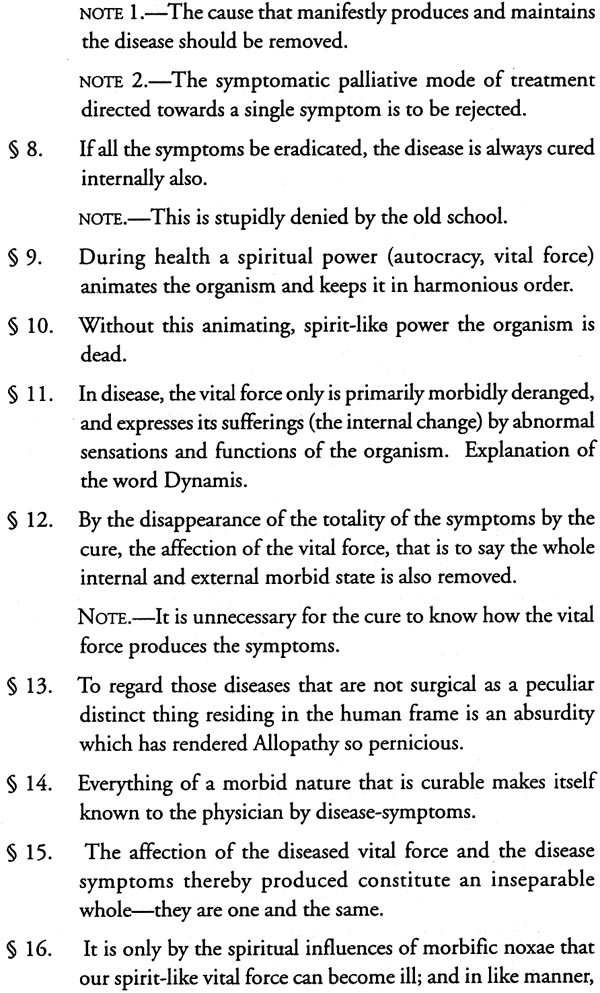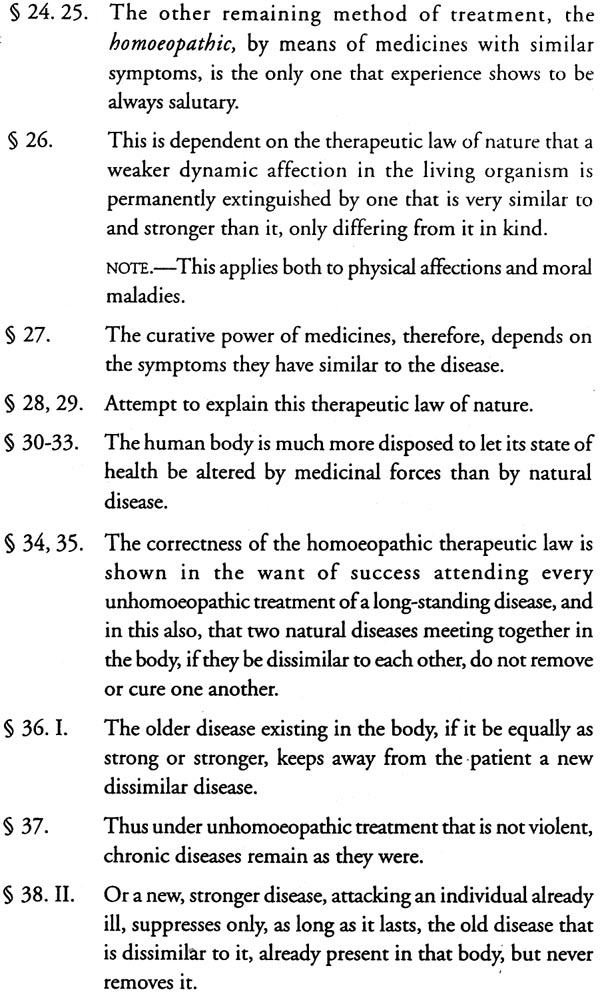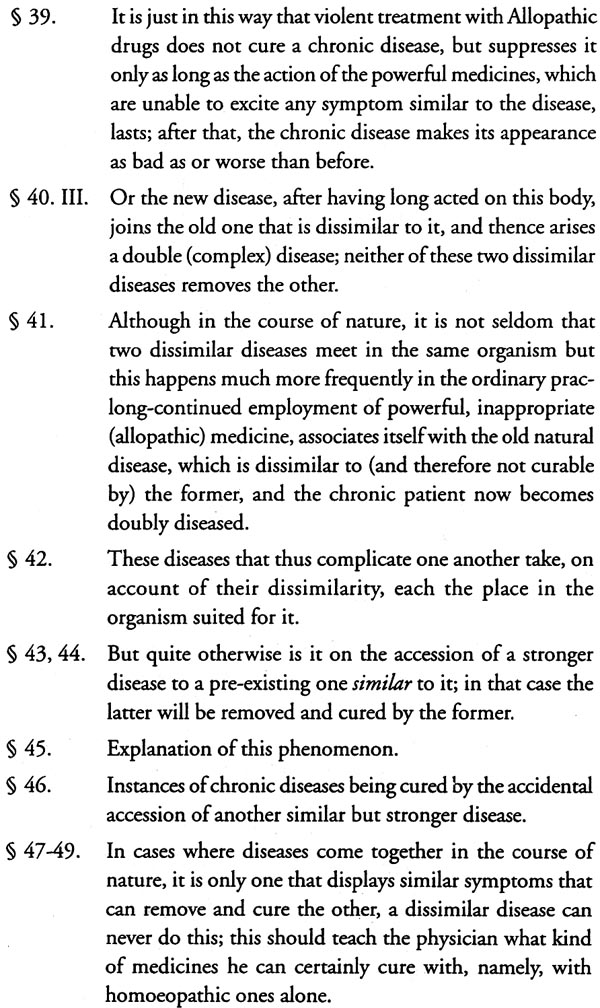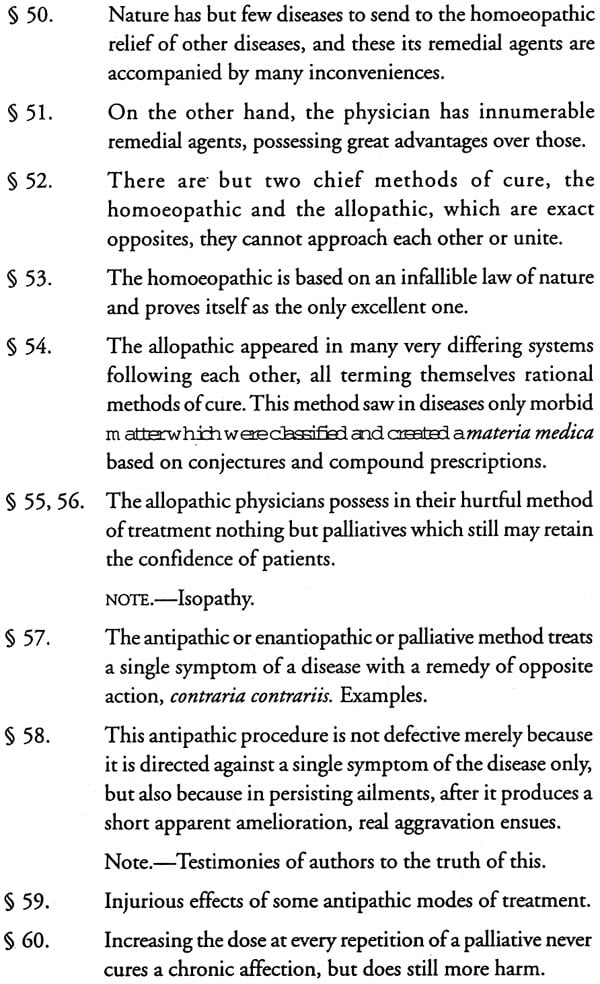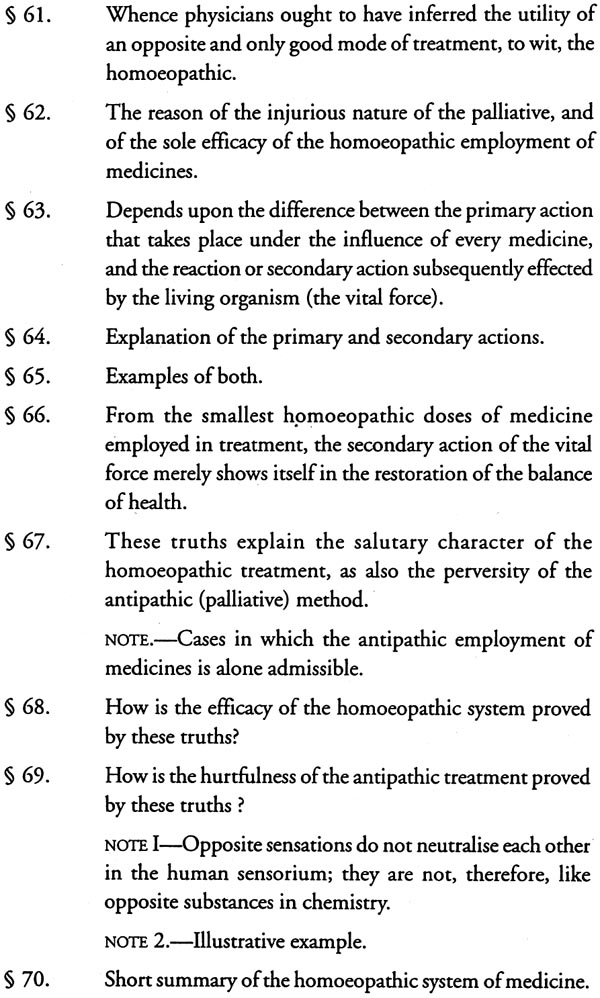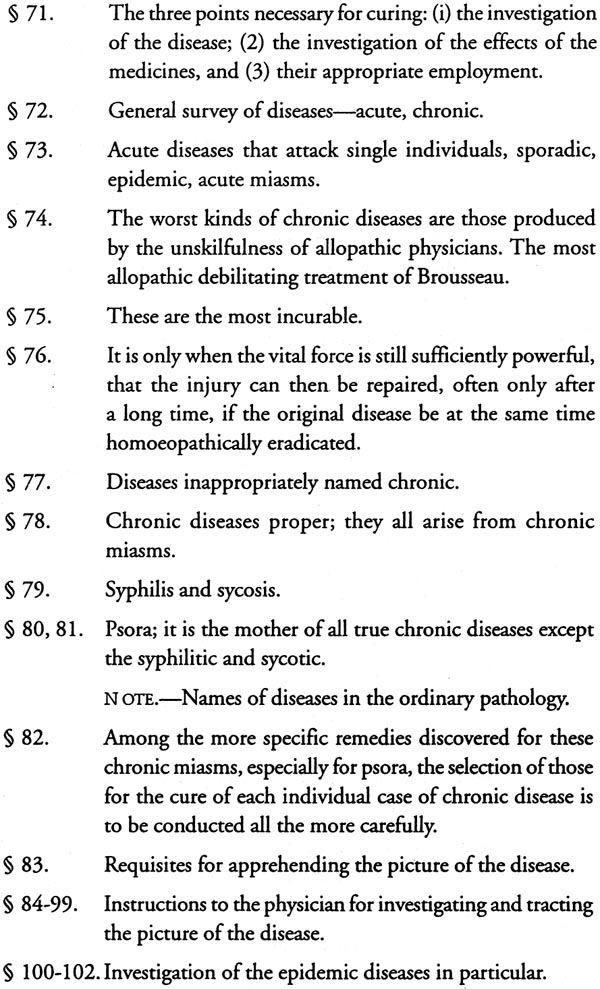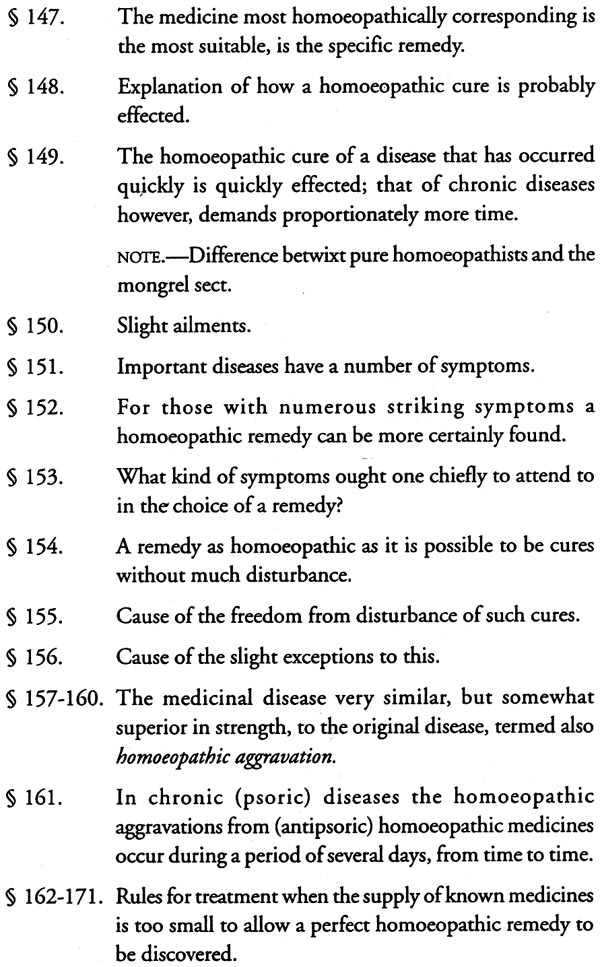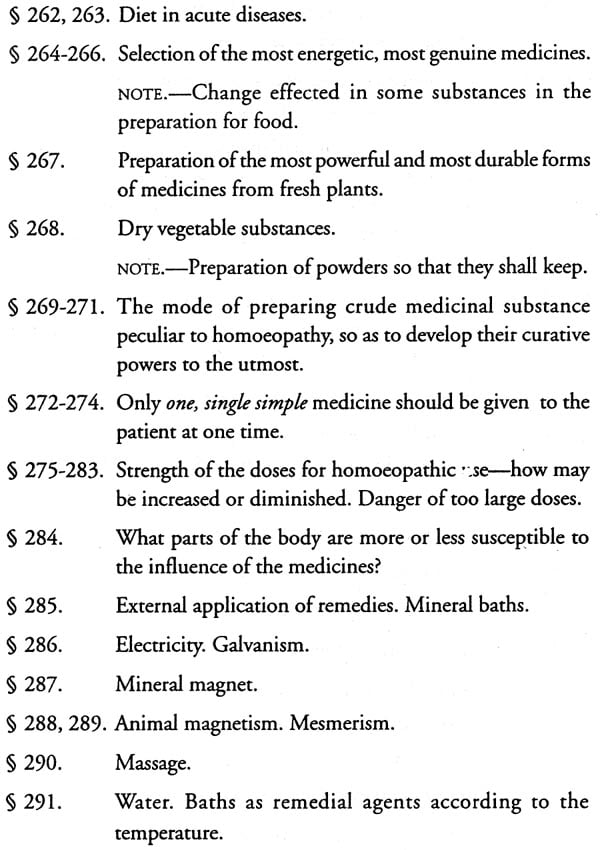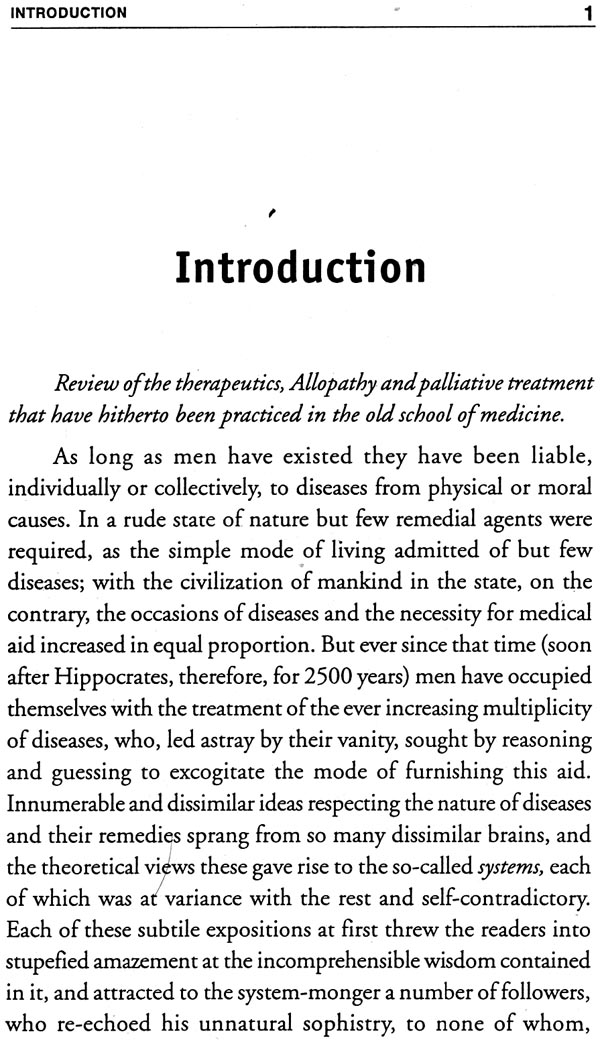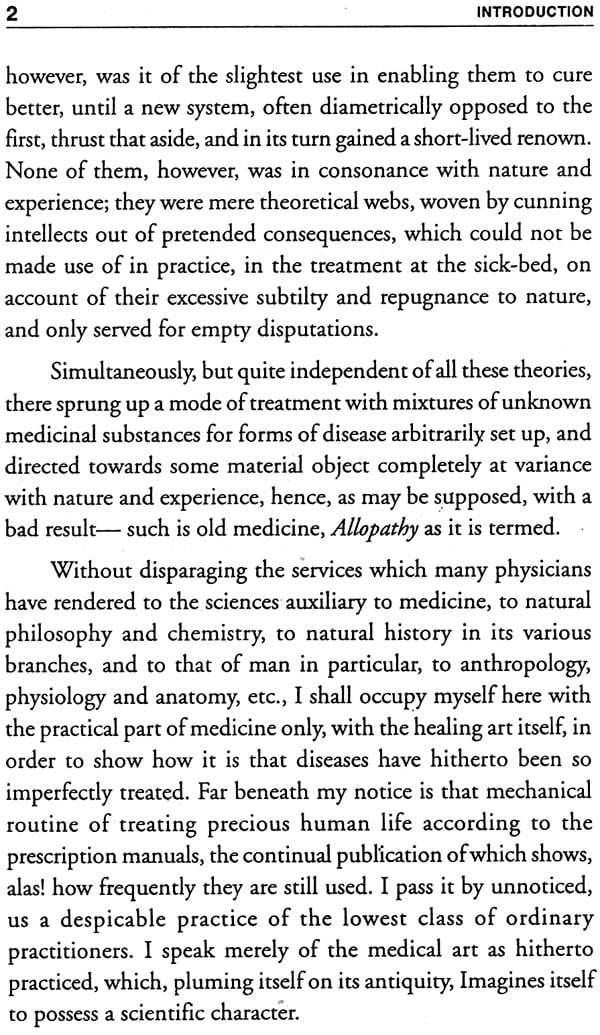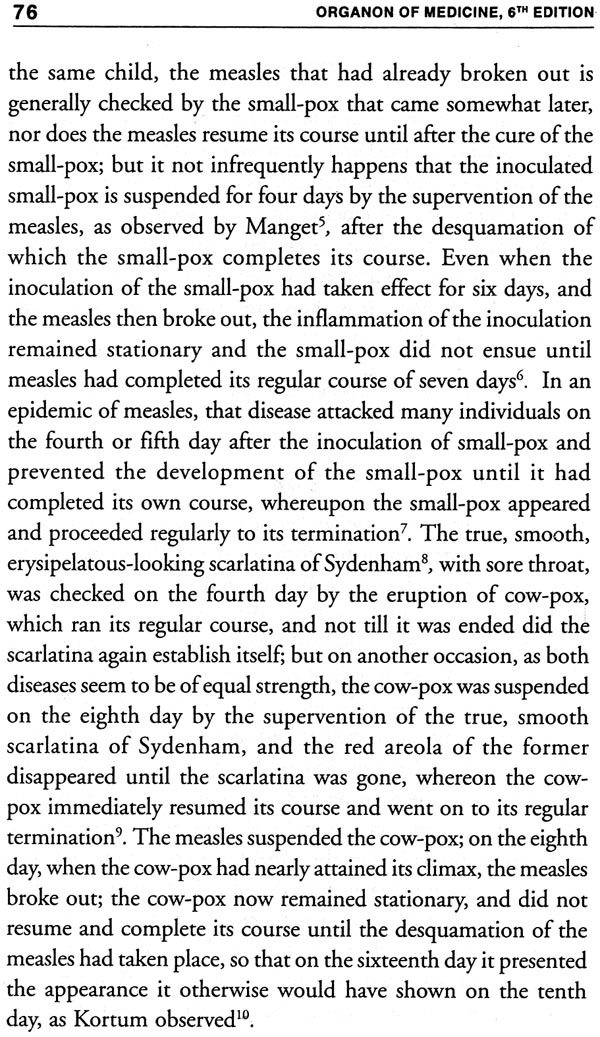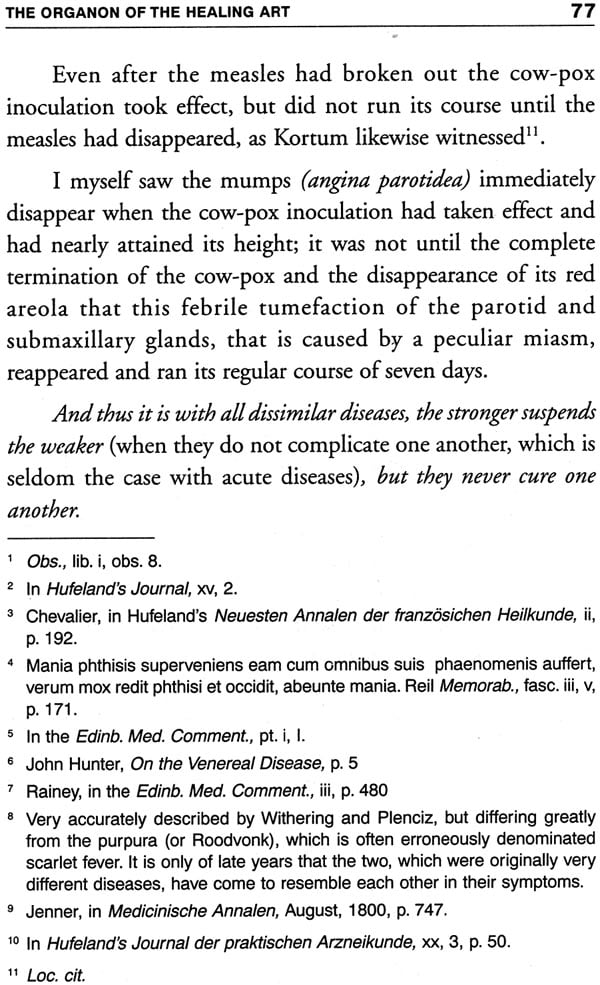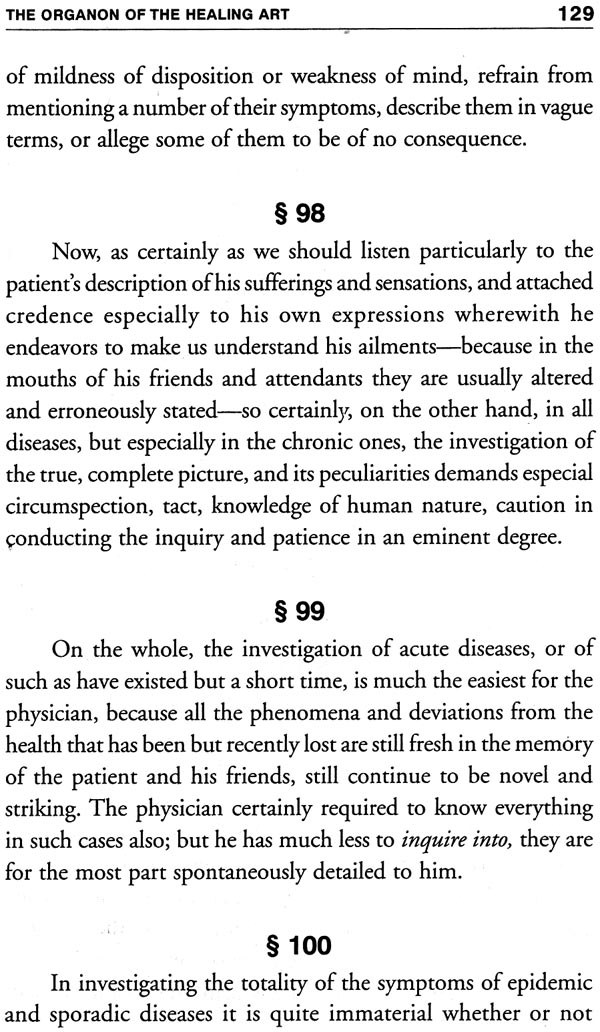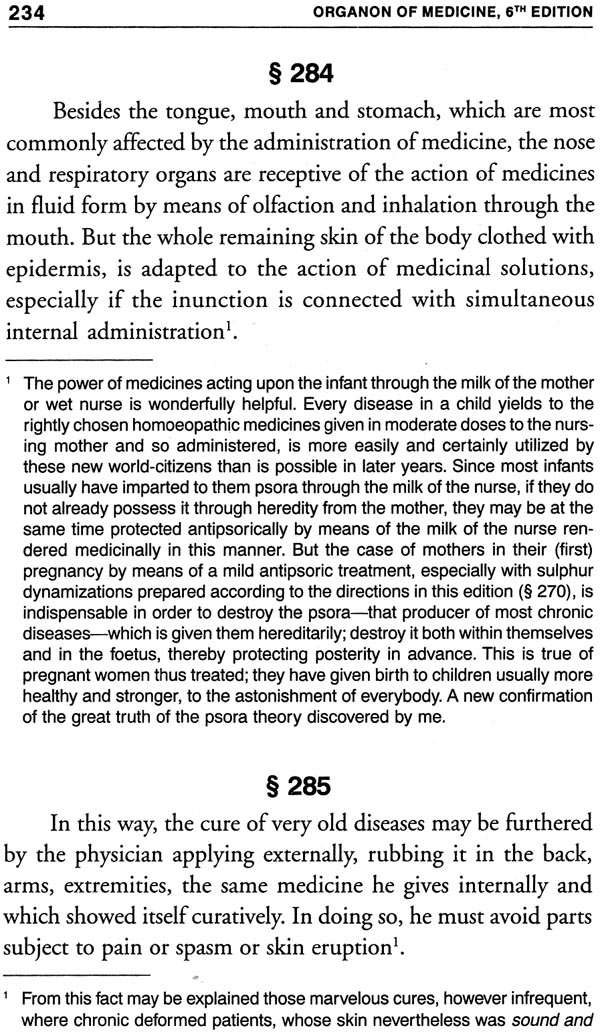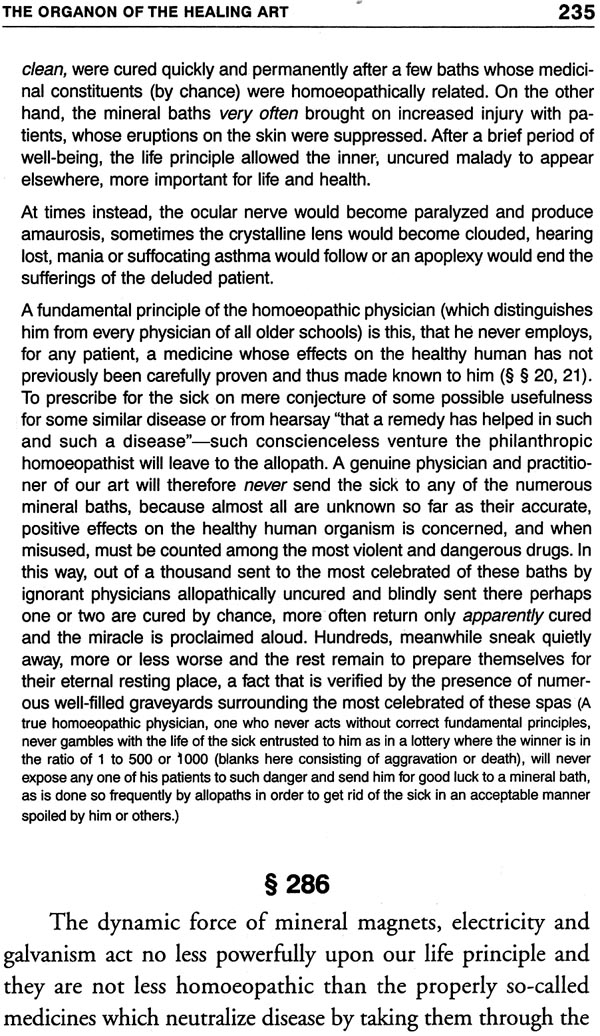
Organon of Medicine
Book Specification
| Item Code: | NAU040 |
| Author: | Samuel Hahnemann and William Boericke |
| Publisher: | B. Jain Publishers (P) Ltd |
| Language: | ENGLISH |
| Edition: | 2016 |
| ISBN: | 9788131902233 |
| Pages: | 256 |
| Cover: | PAPERBACK |
| Other Details | 8.50 X 5.50 inch |
| Weight | 320 gm |
Book Description
The Organon has developed slowly out of Hahnemann’s research and experimentation over a period of time. It underwent as many as six editions. This sixth edition incorporates the latest findings of Dr. Hahnemann during his dying years and deemed to be the most perfect of all. Many newer concepts like replacement of the vital force by vital principle, the 50the millesimal scale of potency and permissibility of external applications were introduced for the first time, which were unheard of in the other editions. The work is a result of the untiring efforts of the master to improve and update his work and is of historical importance as far as medical philosophy is concerned. It is the high water mark of medical philosophy, the physician by mean of the law of cure to a new world in therapeutics.
Read the master’s final views on homeopathic science in his own words! Various positive changes have been made to understand the subject in an easy and effortless way.
- High on philosophy
- footnotes explaining difficult concepts
- Evolution of medical science reinstated
- Word Index for easy reference
Samuel Hahnemann, founder of the homeopathic system of medicine was a thorough master of different languages like German, French, English, Italian, Latin, Greek, Arabic, Syrian, Chaldaic and Hebrew. His medical studies were pursued in the famous centers of learning in Europe. He graduated in medicine with special honours at Erlangen in the year 1779. He was a member of various scientific societies in Leipsic and other cities, and was highly honoured for his researches in chemistry. The last years of hahnemann’s life were spent in Paris, where he was received with every mark of respect and honour, and where his great ability was recognised by an enormous clientage.
William Boericke, born on October 25, 1849, graduated from Philadelphia Medical College in 1876 and Hahnemannian Medical Collegein 1880. In San Franscisco, he practiced homeopathy for over 50 years. He was a member of faculty of Hahnemannian Medical College and author of ‘A Compendium of the Principles of Homoeopathy’, ‘Boericke’s Materia Medica’ and translator to the sixth edition of Hahnemann’s ‘Organon.
The excellence of the Dudgeon translation into english of the fifth German edition of Hahnemann’s "Organon" is thoroughly maintained throughout this english translation of the sixth German edition by Doctor William Boericke, to whom the medical profession is under a double debt for rescuing this last authentic work of Hahnemann from possible loss and for putting it into good, clear, unparaphrased english. Twice, this manuscript of Hahnemann was in danger of being lost, once during the siege of Paris in the Franco-Prussian war of 1870- 71, and once in the military over-running of Westphalia during the World War of 1914-18. Doctor Boericke was the main instrument for procuring this last medical manuscript of Hahnemana for the medical world.
Everything that Hahnemann ever wrote is of historic medical interest, for notwithstanding all attempts of ignorant, prejudiced, time-serving so-called medical historians to detract from Hahnemann his historic importance for medicine, Hahnemann remains one of the four epochal figures in the history of the practice of medicine. Hippocrates, the Observer, introduced the art of clinical observation as the necessary basis for pathologic diagnosis. Galen, the Disseminator, spread with powerful authority the teachings of Hippocrates over the medical world. Paracelsus, the Assailer, introduced chemical as well as physical analysis into the practice of medicine. Hahnemann, the Experimenter, discovered the symptomatic source of both pathologic and therapeutic diagnosis and thereby made the practice of medicine scientific.
In the scientific practice of medicine, we examine every patient suffering from any of the topic, plastic, trophic and toxic diseases to which man is subject, in order to obtain all the signs and symptoms of his disease, all his disease effects for pathologic and therapeutic diagnosis and prognosis. We examine by observing the pathologic and comparing it with the physiologic for diagnostic interpretation, prognostic predication, and therapeutic application. We diagnose by classifying the pathologic condition with similar pathologic conditions. We diagnose the anatomic seat, the where, that is, the organs and the parts of the organs affected. We diagnose the physiologic process, the what, that is, the course of inflammations, exudations, degenerations, necroses, atrophies, hypertrophies, aplasias, hyperplasias. We diagnose the etiologic factor, the how, that is, developmental, traumatic, infectious antecedents of predisposition and excitation. We diagnose the therapeutic application, the end, that is, the remedial treatment for cure and palliation, and the prophylactic treatment for hygiene and sanitation.
The treatment of patients, subject to malformations, mal-positions, mal-nutritions, injuries, foreign bodies, traumatic and infection inflammations, new formations, is effected with medical, surgical, hygienic means, or a combination of all these in a given patient. Surgery may remove or palliate effects of anatomic excesses, defect perversions. Food, water, air, heat and cold, light and electricity, exercise and work, massage and suggestion, as well as glands to replace glands, vaccines to call out antibodies and sera to supply antibodies may remedy or palliate effects of physiologic excesses, deficiencies, perversions, may restore hygiene and establish sanitation. Medicine, in the form of medicinal substances, may remedy or palliate effects of etiologic excesses, defects, perversions, effects which are not remedied or remediable, palliated or palliable by surgery, hygienic or quasi-hygienic measures.
In order to give a general notion of the treatment of diseases pursued by the old school of medicine (Allopathy) it may be observed that it presupposes the existence sometimes of excess of blood (plethora—which is never present), sometimes of morbid matters and acridities; hence it taps off the life’s blood and exerts itself either to clear away the imaginary disease-matter or to conduct it elsewhere (by emetics, purgatives, sialogogues, diaphoretics, diuretics, drawing plasters, setons, issues, etc.), in the vain belief that the disease will thereby be weakened and materially eradicated; in place of which the patient’s sufferings are thereby increased, and by such and other painful appliances the forces and nutritious juices indispensable to the curative process are abstracted from the organism. It assails the body with large doses of powerful medicines, often repeated in rapid succession for a long time, whose long-enduring, not infrequently frightful effects it knows not, and which it, purposely it would almost seem, makes unrecognisable by the commingling of several such unknown substances in one prescription, and by their long-continued employment it develops in the body new and often ineradicable medicinal diseases. Whenever it can, it employs, in order to keep in favor with its patient, [For the same object the experienced allopath delights to invent a fixed name, by preference a Greek one, for the malady, in order to make the patient believe that he has long known this disease as an old acquaintance, and hence is the fitted person to cure it.) remedies that immediately suppress and hide the morbid symptoms by opposition (contraria contrartis) for a short time (palliatives), but that leave the cause for these symptoms (the disease itself) strengthened and aggravated. It considers affections on the exterior of the body as purely local and existing there independently, and vainly supposes that it has cured them when it has driven them away by means of , external remedies, so that the internal affection is thereby compelled to break out on a nobler and more important part. When it knows not what else to do for the disease which will not yield or which grows worse, the old school of medicine undertakes to change it into something else, it knows not what, by means of an alterative,— for example, by the life-undermining calomel, corrosive sublimate and other mercurial preparations in large doses.
It seems that the unhallowed principal business of the old school of medicine (Allopathy) is to render incurable if not fatal the majority of diseases, those made chronic through ignorance by continually weakening and tormenting the already debilitated patient by the further addition of new destructive drug diseases.
When this pernicious practice has become a habit and one is rendered insensible to the admonitions of conscience, this becomes a very easy business indeed.
And yet for all these mischievous operations the ordinary physician of the old school can assign his reasons, which, however, rest only on foregone conclusions of his books and teachers, and on the authority of this or that distinguished physician of the old school. Even the most opposite and the most senseless modes of treatment find there their defence, their authority—let their disastrous effects speak ever so loudly against them. It is only under the old physician who has been at last gradually convinced, after many years of misdeeds, of the mischieves nature of his so-called art, and who no longer treats even the severest diseases with anything stronger than plantain water mixed with strawberry syrup (2. ¢., with nothing), that the smallest number are injured and die.
This non-healing art, which for many centuries has been firmly established in full possession of the power to dispose of the life and death of patients according to its own good will and pleasure, and in that period has shortened the lives of ten times as many human beings as the most destructive wars, and rendered many millions of patients more diseased and wretched than they were originally—this Allopathy, I have, in the introduction to the former editions of this book, considered more in detail. Now I shall consider only its exact opposite, the true healing art, discovered by me and now somewhat more perfected. Examples are given to prove that striking cures performed in former times were always due to remedies basically homoeopathic and found by the physician accidentally and contrary to the then prevailing methods of therapeutics.
**Contents and Sample Pages**
